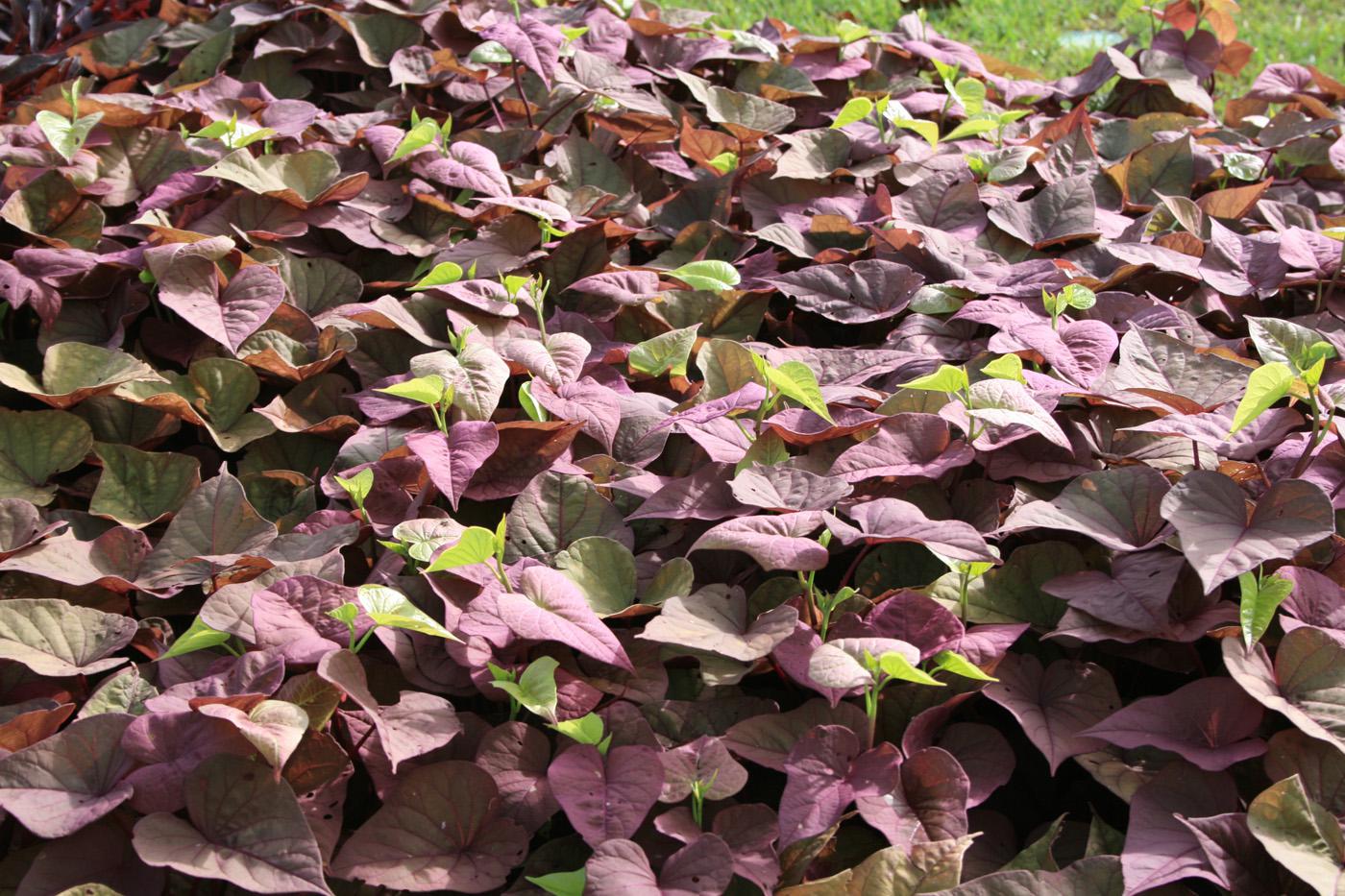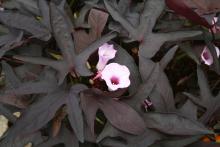Information Possibly Outdated
The information presented on this page was originally released on July 16, 2012. It may not be outdated, but please search our site for more current information. If you plan to quote or reference this information in a publication, please check with the Extension specialist or author before proceeding.
Sweet potato vine adds unique colors
If you’re looking for a vigorous and unique ground cover for your landscape, consider a popular ornamental that I really enjoy, the colorful sweet potato vine.
Longtime favorites include Margarita, which is lime green with large leaves; Blackie, a cut-leaf variety with dark purple to black foliage; and Tricolor, which has leaves of green, pink and white.
New selections have introduced amazing color selections and leaf shapes.
The Sweet Caroline series offers a wide selection for the landscape. The series has two leaf shapes, cut-leaf and heart-shaped. The colors available in the cut-leaf form include bronze, green-yellow, light green, purple and red.
The Sweetheart series has heart-shaped leaves in colors that include light green, purple, red and black.
I really like the darker colors available in sweet potato vines, especially those with the reddish hues. Red foliage is a great way to add color contrast with the primary green foliage of our ornamental plants.
Illusion Garnet Lace has deeply cut foliage, and new leaves emerge light green before turning an attractive burgundy. Illusion Midnight has foliage that is a deep, almost black purple.
I love using sweet potato vines in combination container plantings. The vines cascade out over the container edges and work their way around, between and sometimes over the other plants in the container. Coleus plants have a wide variety of foliage colors and make good planting partners for ornamental sweet potatoes, especially for those combos placed in full sun.
Since ornamental sweet potatoes are vigorous growers, they can become a little unruly and overrun less vigorous plants. Simply prune back to keep them in bounds. The pruning will not impact plant health and will help maintain good, dense growth.
About the only serious pest ornamental sweet potatoes have is the flea beetle. Check with your local Mississippi State University Extension office for the best control measures for these pests.
Plant your sweet potato vines in full sun for the best color development. When planted in the shade, the colors tend to fade with green tints. The plants also benefit from well-drained, high-quality organic soil.
When preparing the planting bed, mix in about 2 pounds of a slow-release fertilizer per 100 square feet of bed. This may be a bit wasteful since the ornamental sweet potatoes spread out quite a bit. Alternatively, drop a tablespoon of slow-release fertilizer into each planting hole to supply nutrients throughout the season.
Ornamental sweet potatoes need consistent moisture. Be sure to irrigate, especially in dry periods, to help maintain good plant health.
Ornamental sweet potatoes are real sweet potatoes that breeders have selected for their vivid colors and attractive leaves. The plants produce a flower that is hidden by the foliage. The flower resembles a morning glory, which is not surprising since the two are closely related.
Ornamental sweet potatoes are annuals in Mississippi, except in the coastal counties where the vines will come back unless the winter was extremely cold. In other areas, vines may overwinter in protected microclimates.
Ornamental sweet potatoes add annual color to landscapes, so why not enjoy them in yours?














